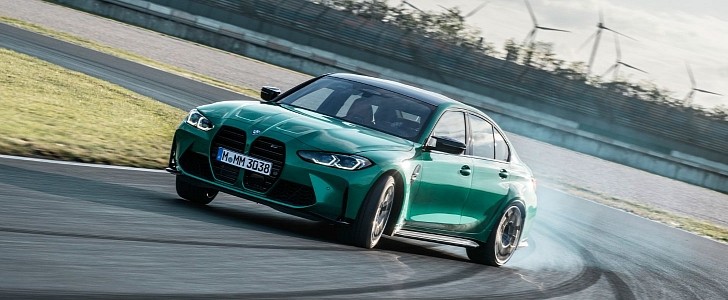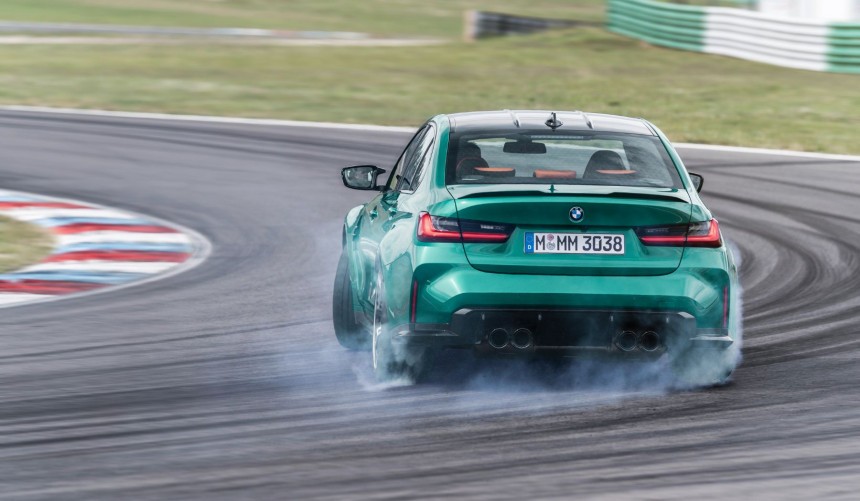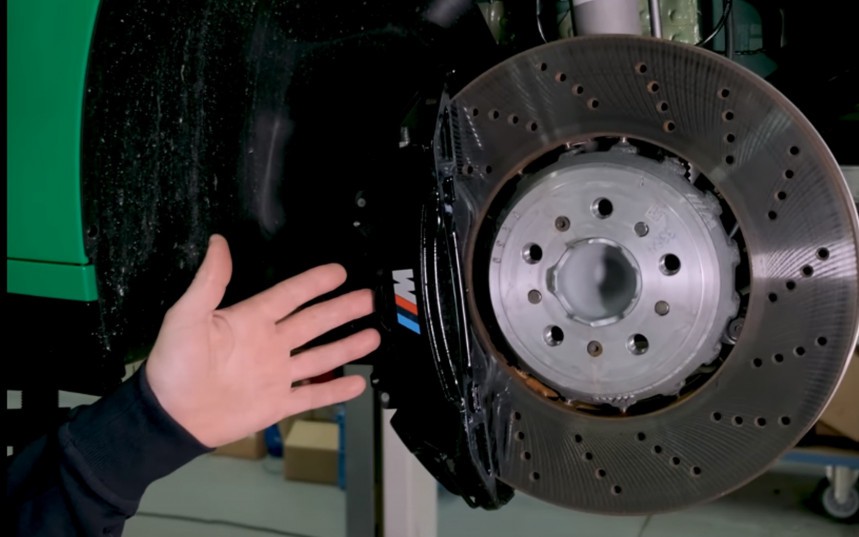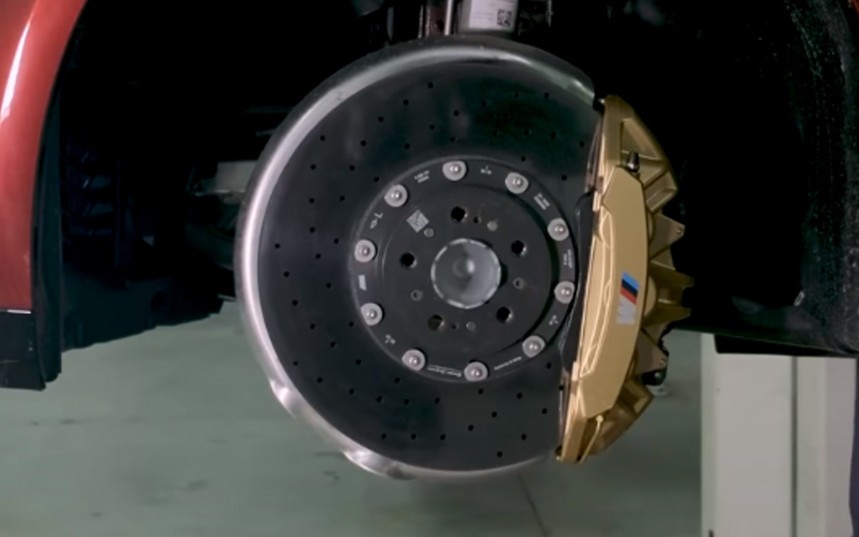Two of the most highly anticipated models set to be released this year, the all-new BMW M3 and M4, will be available with a redesigned set of standard M compound brakes or an optional M carbon-ceramic variant. In this article, we’re taking an in-depth look at both alternatives and understand the differences between them.
Unveiled last autumn, the sixth-generation M3 and second-generation M4 are almost here, and although we’re still not comfortable with those controversial kidney grilles, there are so many other goodies we look forward to experiencing.
One of them is the S58 inline 6-cylinder engine that was refined by BMW M engineers and will produce 48 more horsepower than the previous generation standard M models - an additional 10 hp on those equipped with the Competition package.
This means that the two European muscle cars will spit out 473 hp in standard form and 503 hp with the Competition package. Obviously, this kind of power requires a capable braking system to be enjoyed properly.
In a recent video posted online, the BMW M team revealed details about the state-of-the-art brakes responsible for taming all those ponies. As standard, both M cars will be delivered with a set of M Compound Brakes. To bring the front wheels to a halt, two 6-piston fixed-calipers have been chosen. They come painted in the standard blue metallic coat, but customers can also opt for black or red.
These hi-tech calipers are fitted with specifically designed performance pads that hug a pair of 380-mm (15-in) two-piece drilled rotors. Unlike conventional rotors, these come with a cast-iron friction surface that is connected to the central aluminum hub. This construction method makes them lighter while also improving heat distribution and cooling.
To further improve cooling, the carbon fiber ducts incorporated into the front bumper have been widened and optimized to direct the incoming headwind straight to the brakes.
At the rear, the same type of rotors with a diameter of 370 mm (14.5 in) are used. The floating single-piston calipers are smaller and feature an integrated parking brake function.
Also available on both models is the M carbon-ceramic package, which targets a more demanding type of customer. The pack comes with the same type of calipers painted in an exclusive gold coat. They are fitted onto high-performance carbon-ceramic two-piece drilled rotors with a diameter of 400 mm (15.7 inches) at the front and 380 mm (15 inches) on the rear axle.
Compared to the cast-iron rotors, they are much lighter and provide stronger braking force, better thermal stability, and increased wear resistance.
Both variants are part of the new integrated braking system, which houses braking force assistance, actuation, and control functions in the same compact module.
This innovative system allows drivers to choose between Comfort and Sport settings to change the way the brakes feel and function. The first is suited for everyday driving and emphasizes comfort while the latter maximizes brake force, ensuring optimum performance on the track.
The two new M models will finally be available next month. The standard M3 will have a starting price of $69,900, while the Competition version will start at $72,800. The M4 Coupe will be available for $71,800, and those who want the Competition model will have to pay around $74,700. There is also a wide range of M Performance parts to choose from and you can learn more about them in this article.
One of them is the S58 inline 6-cylinder engine that was refined by BMW M engineers and will produce 48 more horsepower than the previous generation standard M models - an additional 10 hp on those equipped with the Competition package.
This means that the two European muscle cars will spit out 473 hp in standard form and 503 hp with the Competition package. Obviously, this kind of power requires a capable braking system to be enjoyed properly.
These hi-tech calipers are fitted with specifically designed performance pads that hug a pair of 380-mm (15-in) two-piece drilled rotors. Unlike conventional rotors, these come with a cast-iron friction surface that is connected to the central aluminum hub. This construction method makes them lighter while also improving heat distribution and cooling.
At the rear, the same type of rotors with a diameter of 370 mm (14.5 in) are used. The floating single-piston calipers are smaller and feature an integrated parking brake function.
Also available on both models is the M carbon-ceramic package, which targets a more demanding type of customer. The pack comes with the same type of calipers painted in an exclusive gold coat. They are fitted onto high-performance carbon-ceramic two-piece drilled rotors with a diameter of 400 mm (15.7 inches) at the front and 380 mm (15 inches) on the rear axle.
Both variants are part of the new integrated braking system, which houses braking force assistance, actuation, and control functions in the same compact module.
This innovative system allows drivers to choose between Comfort and Sport settings to change the way the brakes feel and function. The first is suited for everyday driving and emphasizes comfort while the latter maximizes brake force, ensuring optimum performance on the track.
The two new M models will finally be available next month. The standard M3 will have a starting price of $69,900, while the Competition version will start at $72,800. The M4 Coupe will be available for $71,800, and those who want the Competition model will have to pay around $74,700. There is also a wide range of M Performance parts to choose from and you can learn more about them in this article.















